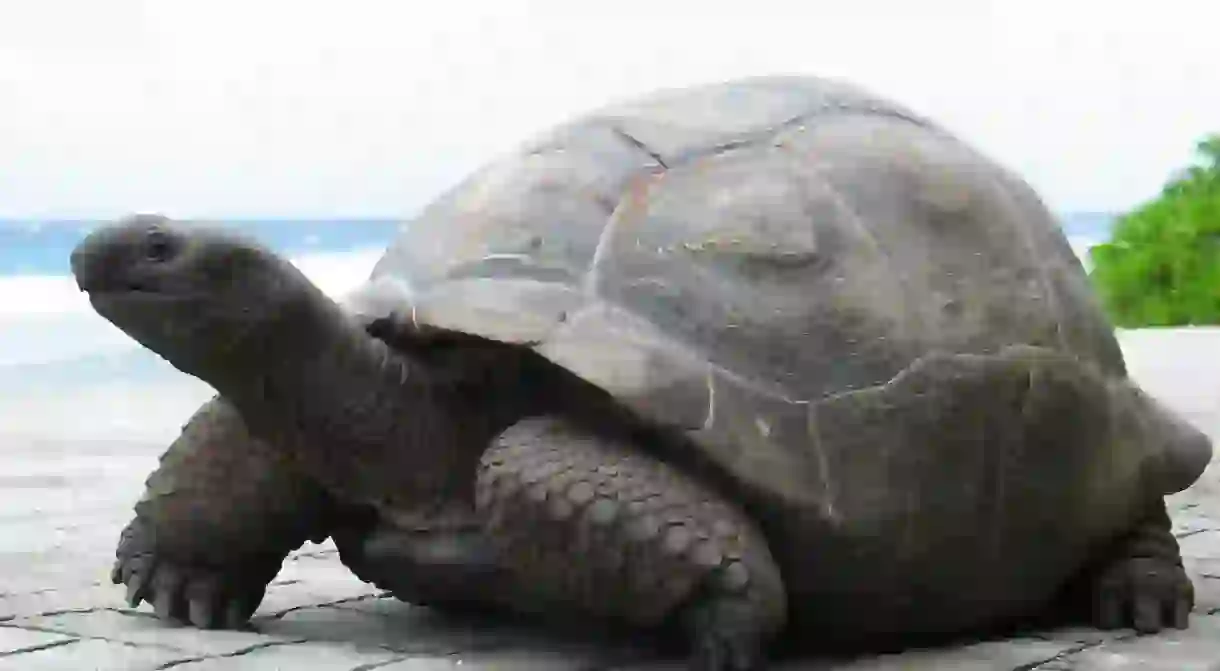An Introduction to Seychelles' Giant Tortoises

At one time, giant tortoises could be found on many of the islands across the Indian Ocean. When first discovered, giant tortoises were considered extremely delicious and subsequently were overexploited for food. Today, only one type of these giant tortoises remains in Seychelles: the Aldabra giant tortoise.

The giant tortoises found in Seychelles are now officially listed as vulnerable by the International Union for Conservation of Nature (IUCN), and since 1974 have been protected by Seychelles law under the Wild Animals and Birds Protection Act.
The Aldabra giant tortoise or Aldabrachelys gigantea – are named after the Aldabra Atoll where they originated. The Aldabra Atoll became a UNESCO World Heritage Site in 1982. The Atoll is also labelled a ‘strict nature reserve’ by IUCN.
Today, there are more than 152,000 Aldabra tortoises living on the Aldabra Atoll. Visiting Aldabra is not an easy thing to do. First, it is the furthest point in the Seychelles archipelago, lying approximately 1,150km (715 miles) away from Mahé. Second, all trips must be approved by the Seychelles Islands Foundation, and numbers are heavily restricted.

Many other Seychelles islands now contain Aldabra tortoises living in the wild, including North Island, Cousin Island and Curieuse Island. The latter has approximately 500. You can also find Aldabra tortoises living in enclosures across Seychelles, including the Union Estate on La Digue.
You will find Aldabra tortoises living alone as well in groups, both in the wild and in captivity. In the wild, a group of tortoises, known as a herd, will generally be found grazing on grasslands.
You might see giant tortoises grazing on fresh lettuce leaves and fruit in captivity. In the wild, they generally still follow a herbivore diet as they eat a mix of grasses and stems. However, they have also occasionally been known to eat insects and even other dead tortoises.
Aldabra tortoises typically live between 80–120 years. There has, however, been exceptions to this. Currently, the record for the oldest animal in the world is held by Jonathan – the 184-year-old Aldabra tortoise. Before this, the record was held by Adwaitya – also an Aldabra tortoise – who lived to be around 255 years old.













